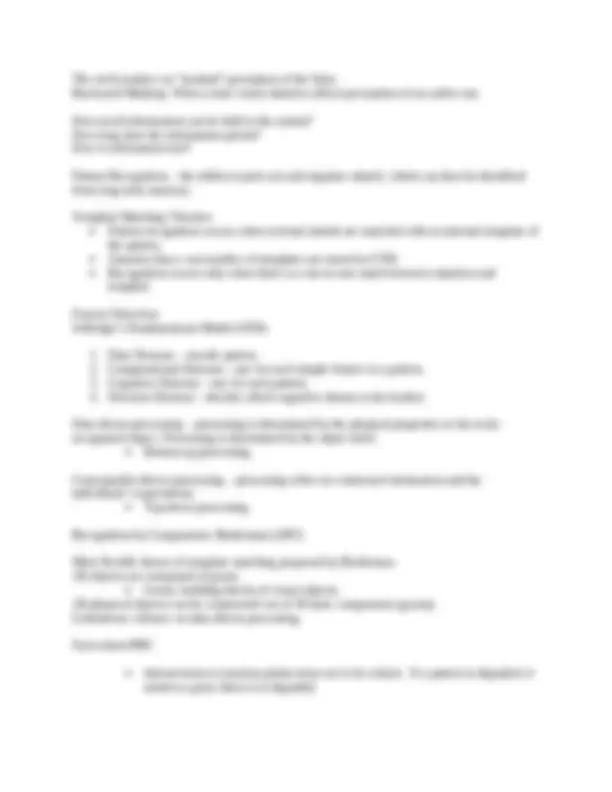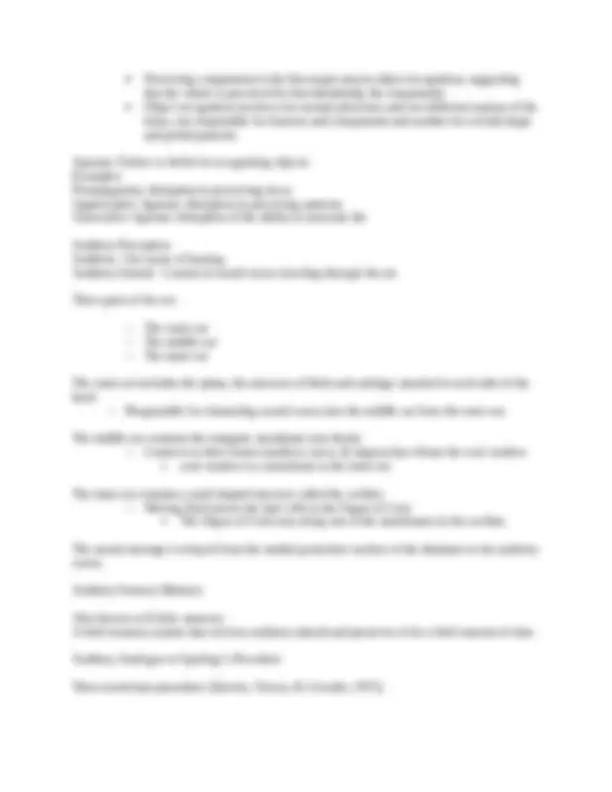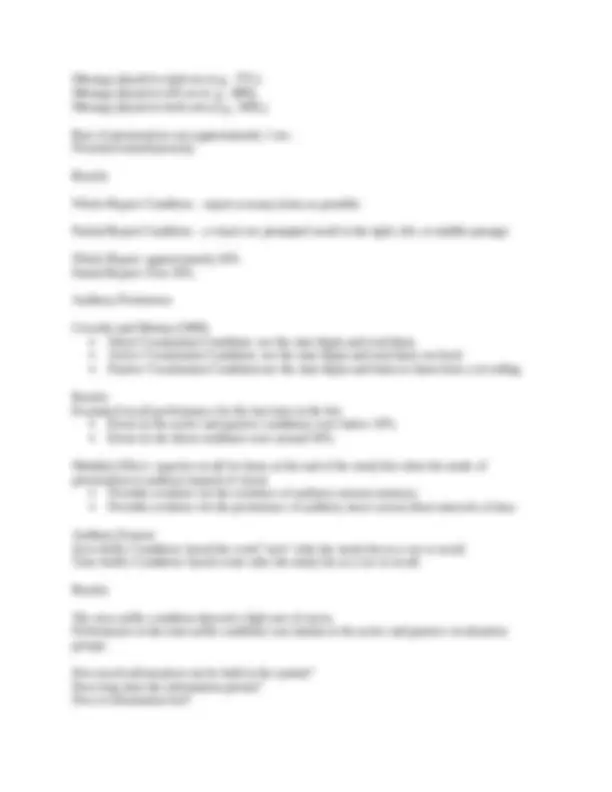





Study with the several resources on Docsity

Earn points by helping other students or get them with a premium plan


Prepare for your exams
Study with the several resources on Docsity

Earn points to download
Earn points by helping other students or get them with a premium plan
Community
Ask the community for help and clear up your study doubts
Discover the best universities in your country according to Docsity users
Free resources
Download our free guides on studying techniques, anxiety management strategies, and thesis advice from Docsity tutors
chapter 3 Material Type: Notes; Professor: Bucur; Class: Thinking And Cognition; Subject: Psychology; University: University of Missouri-St Louis;
Typology: Study notes
1 / 5

This page cannot be seen from the preview
Don't miss anything!




Chapter 3 Perception and Pattern Recognition Visual Perception Retina: The layer of the eye covered with the rods and cones that initiate the process of visual sensation and perception. Rods and Cones : Form the back layer of neurons on the retina and are the first neurons stimulated by light. Fovea: The highly sensitive region of the retina responsible for precise, focused vision, composed largely of cones. Bipolar Cells : Patterns of neural firing from the rods and cones are forwarded to the second layer of neurons, the bipolar cells. Ganglion Cells : Collected messages from the bipolar cells are passed along to the third layer of neurons, the ganglion cell Axons leave the eye and form the optic nerve Two pathways:
Change Blindness : The failure to notice changes in visual stimuli (e.g. photographs) when those changes occur during a saccade. Inattentional Blindness : We sometimes fail to see an object we are looking at directly, even a highly visible one, because our attention is directed elsewhere. 3 Questions for Each Memory System;
Perceiving components is the first major step in object recognition, suggesting that the whole is perceived by first identifying the components. Object recognition involves two mental processes and two different regions of the brain, one responsible for features and components and another for overall shape and global patterns. Agnosia: Failure or deficit in recognizing objects. Examples: Prosopagnosia: disruption in perceiving faces. Apperceptive Agnosia: disruption in perceiving patterns. Associative Agnosia: disruption of the ability to associate the Auditory Perception Audition: Our sense of hearing. Auditory Stimuli: Consist of sound waves traveling through the air. Three parts of the ear:
Message played to right ear (e.g., T7C). Message played to left ear (e..g., 4B9). Message played to both ears (e.g., M2L). Rate of presentation was approximately 1 sec. Presented simultaneously Results Whole-Report Condition – report as many items as possible. Partial-Report Condition – a visual cue prompted recall in the right, left, or middle passage. Whole Report: approximately 44% Partial Report: Over 50% Auditory Persistence Crowder and Morton (1969) Silent Vocalization Condition: see the nine digits and read them. Active Vocalization Condition: see the nine digits and read them out loud. Passive Vocalization Condition:see the nine digits and listen to them from a recording Results Examined recall performance for the last item in the list. Errors in the active and passive conditions were below 10%. Errors in the silent condition were around 50%. Modality Effect: superior recall for items at the end of the study list when the mode of presentation is auditory instead of visual. Provides evidence for the existence of auditory sensory memory. Provides evidence for the persistence of auditory traces across short intervals of time. Auditory Erasure Zero-Suffix Condition: heard the word “zero” after the study list as a cue to recall. Tone-Suffix Condition: heard a tone after the study list as a cue to recall. Results The zero-suffix condition showed a high rate of errors. Performance in the tone-suffix condition was similar to the active and passive vocalization groups. How much information can be held in the system? How long does the information persist? How is information lost?